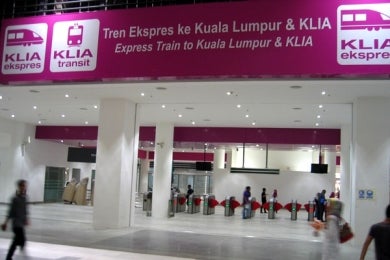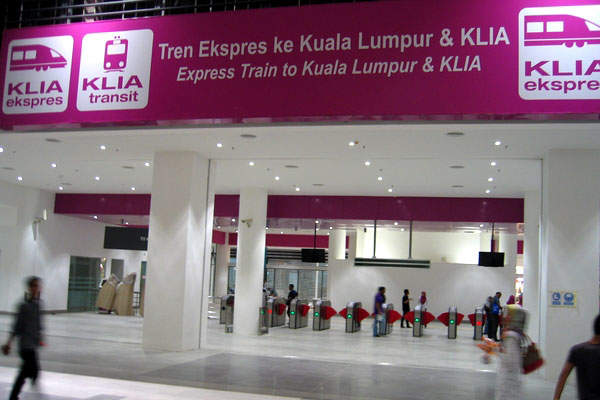
Kuala Lumpur International Airport 2 (KLIA2) is a new purpose-built mega terminal, which is designed to replace the older, low-cost terminal at the Kuala Lumpur International Airport. The new terminal features the world’s tallest air traffic control (ATC) tower standing at a height of 133.8m (438ft).
Construction of the new carrier terminal began in September 2010 and its inauguration was held in May 2014. The terminal is located within 2km of KLIA and is connected via Express Rail link’s high-speed train. The terminal is capable of accommodating 45 million passengers a year.
Malaysia Airport Holdings Berhad (MAHB) developed the new terminal at a total cost of MYR4bn (approximately $1.23bn).
KLIA2 terminal details
The KLIA2 terminal extends over an area of 360,000m² and comprises a main terminal building with a gross floor area of 257,000m². The main building and the satellite building are linked by a Skybridge, making it the first airport in Asia to use such a system.
KLIA2 features a 4km runway, known as Runway 3, which is located 2.2km from Runway 2, therefore allowing aircraft take-off and landing operations at the same time.
Penang International Airport ranks third in Malaysia’s busiest airports, behind Kota Kinabalu International Airport and Kuala Lumpur International Airport.
The terminal comprises 68 boarding gates and aerobridges, which assist aircraft boarding in all weather conditions. Approximately 35,200m² of the terminal is dedicated for retail and catering outlets.
The new terminal features Gateway, an integrated complex forming the main entrance for the world’s biggest low-cost carrier terminal. Gateway is situated between the drop-off point and the main terminal and comprises 350,000ft² of net lettable space over four levels and a multi-storey car park.
Gateway at KLIA2 is divided into four levels – Level 1, Level 2, Level 2M (Mezzanine) and Level 3. Level 1 consists of the transportation hub that centralises all forms of public transportation, making it easier for passengers to find their respective modes of transport. Level 2 and Level 2M feature a space designated for meeters and greeters, car lobbies, restaurants and shops.
The departure level is located on Level 3 of the main terminal building and comprises four islands with a total of 128 common user passenger processing system (CUPPS) check-in counters. The departure hall features 55 self-service check-in kiosks, referred to as common use self-service (CUSS) kiosks.
The Level 3 consists of Sama-Sama Express KLIA2, a 70-room airside transit hotel that provides accomodation facilities for passengers.
Screening checkpoints are located at the boarding gates at each boarding piers for security purposes.
Air traffic control tower
Tower West, the 133.8m tall air traffic control tower (ATCT) at the new KLIA2 terminal, entered the Guinness Book of World Records as the world’s tallest ATCT, beating the 132.2m tall Suvarnabhumi air traffic control tower.
Construction of the tower was completed in April 2013 at a cost of MYR55m (approximately $16m).
Car parking
The multi-storey car park consists of 6,490 covered parking spaces and is located adjacent to the Gateway.
Contractors involved
The construction contract for the new terminal at Kuala Lumpur International Airport was awarded to the joint venture of UEM Construction and Bina Puri.
Fajarbaru Builder Group was awarded the contract for providing the visual docking guidance system.
Segi Astana, a joint venture between WCT Holdings (holds 70% equity) and Malaysia Airports Holdings (holds 30%), was awarded the contract for developing the gateway at KLIA2.
New Zealand-based company BCS was awarded a contract worth $39m for delivering an automated baggage handling system for the new KLIA2 LCC terminal. Perkasa Jauhari was engaged for the construction of the air traffic control tower.





